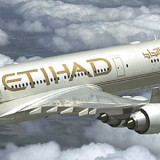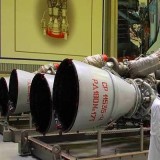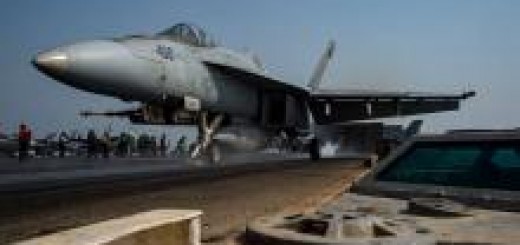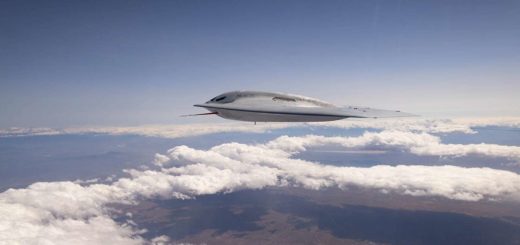New Era for Czech Pilot With Delivery of First L-39 Skyfox Multi-Role Fighter Jet
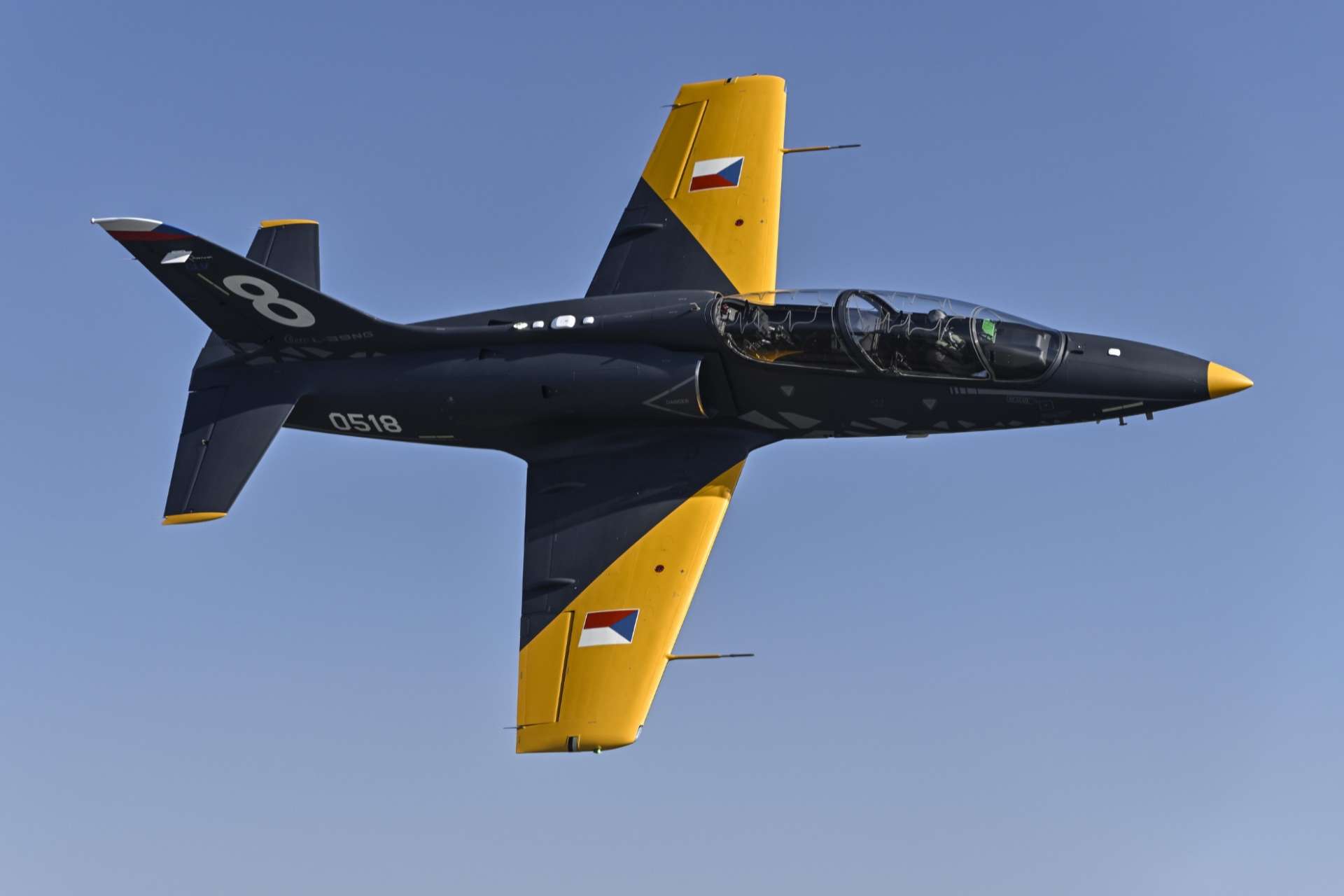
{loadposition bannertop}
{loadposition sidebarpub}
Aero Vodochody has recently delivered the first L-39 Skyfox, a new generation of the legendary L-39 Albatros, to the Czech Air Force. This aircraft, which has been sent to the Pardubice Flight Training Center operated by the state-owned company LOM Praha, marks a step forward in modernizing the training resources available to Czech pilots. Formerly known as the L-39NG, the L-39 Skyfox stands out from its predecessor thanks to an overall improvement in performance and avionics.
Follow Army Recognition on Google News at this link
The L-39 Skyfox is an evolution of the iconic L-39 Albatros, designed to meet the needs of contemporary air forces looking for a versatile and cost-effective aircraft for pilot training. (Picture source: Aero)
The L-39 Skyfox is the most modern version of the training aircraft series developed by the Czech company Aero Vodochody. It is an evolution of the iconic L-39 Albatros, designed to meet the needs of contemporary air forces looking for a versatile and cost-effective aircraft for pilot training. One of the key features of the L-39 Skyfox is the adoption of a Williams International FJ44-4M turbofan engine, generating a thrust of about 16.89 kilonewtons (3,800 pounds). This engine delivers solid performance, allowing the aircraft to reach a maximum speed of around 900 km/h at 6,000 meters and an operational ceiling of 11,500 meters. It can climb at a rate of approximately 23 meters per second, making it ideal for advanced training in aerial maneuvers and realistic mission simulations.
The L-39 Skyfox has a relatively compact design, measuring 11.83 meters in length with a wingspan of 9.37 meters. Its airframe incorporates a NACA 64A012 wing profile and a redesigned fuselage to accommodate the new engine and optimize drag. Its empty weight is around 3,100 kilograms, and it can reach a maximum takeoff weight of 5,800 kilograms. It carries enough fuel for up to four and a half hours of flight, providing a range of up to 2,590 kilometers. This is a major advantage for training, as it allows for extended and varied missions without frequent refueling stops.
The aircraft is configured for two crew members, an instructor and a trainee, who benefit from a modern glass cockpit. This advanced avionics suite meets current standards, with multifunction displays, digital navigation systems, and the option to install infrared sensors or target designation pods. Operationally, the L-39 Skyfox can carry up to 1,640 kilograms of external stores on five hardpoints. Two of these are “wet” stations connected to the fuel system, allowing the addition of auxiliary tanks to extend the aircraft’s range. Compatible weapons include infrared-guided air-to-air missiles, laser-guided bombs, rockets and conventional bombs, as well as gun pods of various calibers. This makes it suitable for advanced training missions, light fire support, and even surveillance or reconnaissance using specialized sensors.
The aircraft’s versatility also stems from its capacity to integrate various countermeasure systems, including programmable jamming pods. These features, combined with a head-up display and other electronic aids, prepare trainee pilots for the most demanding scenarios. Thanks to its technical modernization and ease of maintenance compared to previous versions, the L-39 Skyfox stands out as a high-performance training aircraft that is competitive on the international market, while offering a realistic environment for transitioning to new-generation multirole fighters.
One of the key advantages of the L-39 Skyfox is its competitive price, which remains below USD 10 million per unit. Combined with its versatile capabilities—including advanced pilot training, light strike, and reconnaissance—it presents an appealing option for air forces seeking to replace or supplement their current trainer fleets. With five hardpoints instead of the two found on older L-39 models, the aircraft can be equipped with a variety of payloads, such as light bombs or a gun pod, enhancing its multi-role potential. Its modern design also focuses on lowering operational costs, making it a high-performance, cost-effective choice for budget-conscious operators.
This acquisition enhances the Czech Republic’s national training capabilities and strengthens the country’s defense industry, represented by Aero Vodochody, a historical player in the aviation sector. By providing cutting-edge technology, the L-39 Skyfox ensures that new pilots are well-prepared for the transition to more advanced combat aircraft. Beyond its domestic impact, this delivery boosts the reputation of the Czech manufacturer on the international stage, as Aero Vodochody aims to attract global customers. Additional L-39 Skyfox aircraft are expected to join the Czech Air Force and other militaries worldwide, with continuous feedback enabling further refinements of the platform’s performance.

{loadposition bannertop}
{loadposition sidebarpub}
Aero Vodochody has recently delivered the first L-39 Skyfox, a new generation of the legendary L-39 Albatros, to the Czech Air Force. This aircraft, which has been sent to the Pardubice Flight Training Center operated by the state-owned company LOM Praha, marks a step forward in modernizing the training resources available to Czech pilots. Formerly known as the L-39NG, the L-39 Skyfox stands out from its predecessor thanks to an overall improvement in performance and avionics.
The L-39 Skyfox is an evolution of the iconic L-39 Albatros, designed to meet the needs of contemporary air forces looking for a versatile and cost-effective aircraft for pilot training. (Picture source: Aero)
The L-39 Skyfox is the most modern version of the training aircraft series developed by the Czech company Aero Vodochody. It is an evolution of the iconic L-39 Albatros, designed to meet the needs of contemporary air forces looking for a versatile and cost-effective aircraft for pilot training. One of the key features of the L-39 Skyfox is the adoption of a Williams International FJ44-4M turbofan engine, generating a thrust of about 16.89 kilonewtons (3,800 pounds). This engine delivers solid performance, allowing the aircraft to reach a maximum speed of around 900 km/h at 6,000 meters and an operational ceiling of 11,500 meters. It can climb at a rate of approximately 23 meters per second, making it ideal for advanced training in aerial maneuvers and realistic mission simulations.
The L-39 Skyfox has a relatively compact design, measuring 11.83 meters in length with a wingspan of 9.37 meters. Its airframe incorporates a NACA 64A012 wing profile and a redesigned fuselage to accommodate the new engine and optimize drag. Its empty weight is around 3,100 kilograms, and it can reach a maximum takeoff weight of 5,800 kilograms. It carries enough fuel for up to four and a half hours of flight, providing a range of up to 2,590 kilometers. This is a major advantage for training, as it allows for extended and varied missions without frequent refueling stops.
The aircraft is configured for two crew members, an instructor and a trainee, who benefit from a modern glass cockpit. This advanced avionics suite meets current standards, with multifunction displays, digital navigation systems, and the option to install infrared sensors or target designation pods. Operationally, the L-39 Skyfox can carry up to 1,640 kilograms of external stores on five hardpoints. Two of these are “wet” stations connected to the fuel system, allowing the addition of auxiliary tanks to extend the aircraft’s range. Compatible weapons include infrared-guided air-to-air missiles, laser-guided bombs, rockets and conventional bombs, as well as gun pods of various calibers. This makes it suitable for advanced training missions, light fire support, and even surveillance or reconnaissance using specialized sensors.
The aircraft’s versatility also stems from its capacity to integrate various countermeasure systems, including programmable jamming pods. These features, combined with a head-up display and other electronic aids, prepare trainee pilots for the most demanding scenarios. Thanks to its technical modernization and ease of maintenance compared to previous versions, the L-39 Skyfox stands out as a high-performance training aircraft that is competitive on the international market, while offering a realistic environment for transitioning to new-generation multirole fighters.
One of the key advantages of the L-39 Skyfox is its competitive price, which remains below USD 10 million per unit. Combined with its versatile capabilities—including advanced pilot training, light strike, and reconnaissance—it presents an appealing option for air forces seeking to replace or supplement their current trainer fleets. With five hardpoints instead of the two found on older L-39 models, the aircraft can be equipped with a variety of payloads, such as light bombs or a gun pod, enhancing its multi-role potential. Its modern design also focuses on lowering operational costs, making it a high-performance, cost-effective choice for budget-conscious operators.
This acquisition enhances the Czech Republic’s national training capabilities and strengthens the country’s defense industry, represented by Aero Vodochody, a historical player in the aviation sector. By providing cutting-edge technology, the L-39 Skyfox ensures that new pilots are well-prepared for the transition to more advanced combat aircraft. Beyond its domestic impact, this delivery boosts the reputation of the Czech manufacturer on the international stage, as Aero Vodochody aims to attract global customers. Additional L-39 Skyfox aircraft are expected to join the Czech Air Force and other militaries worldwide, with continuous feedback enabling further refinements of the platform’s performance.




